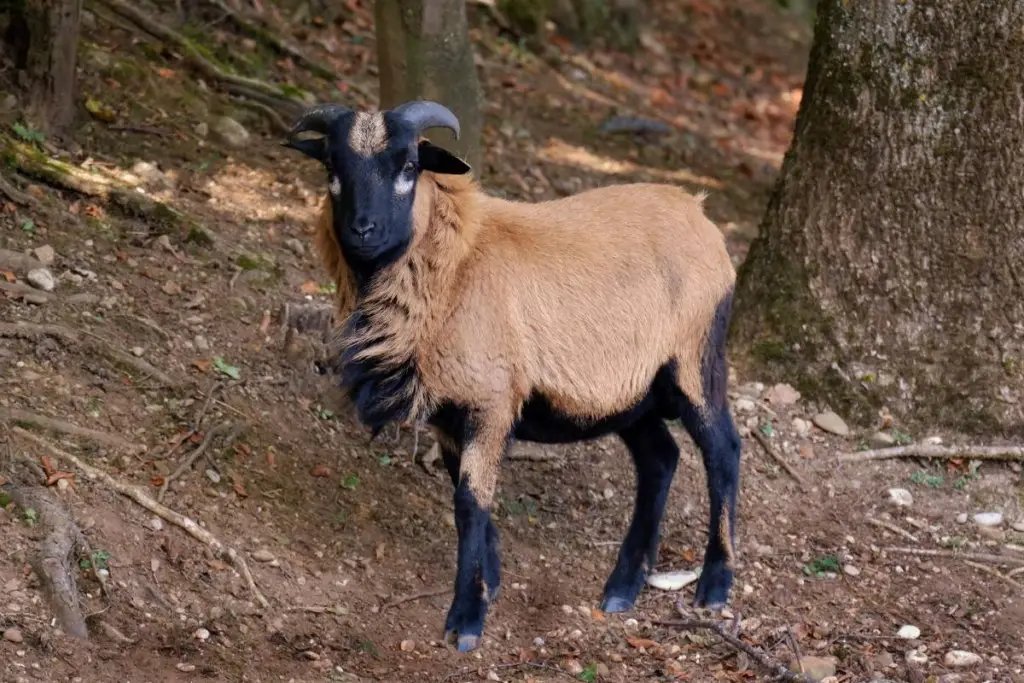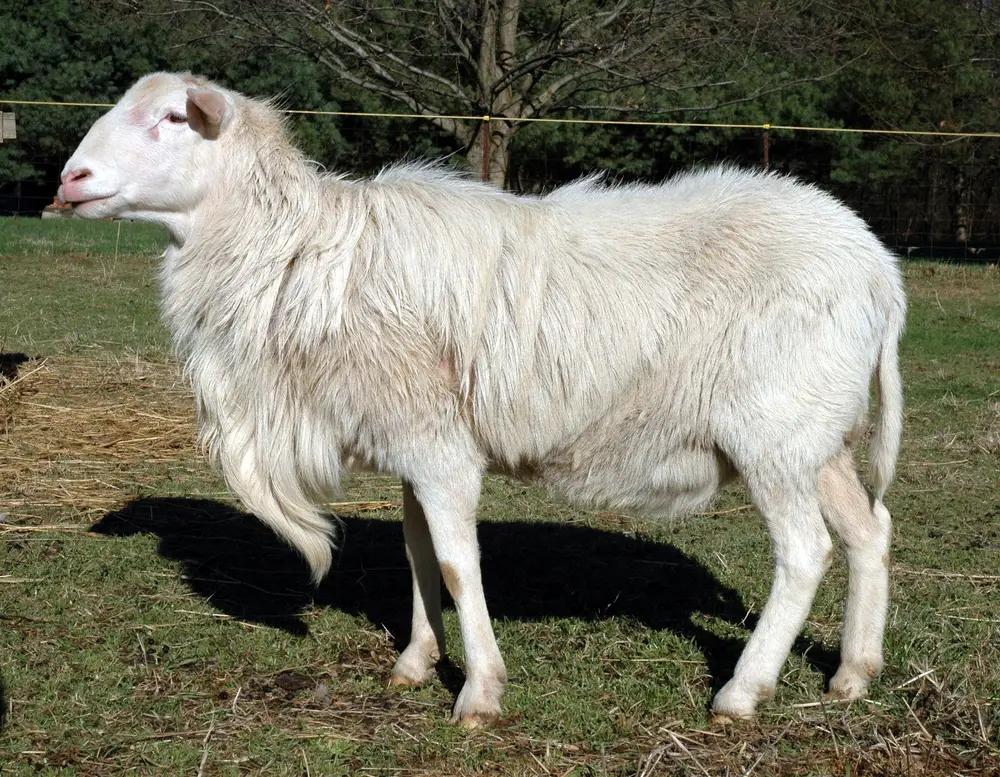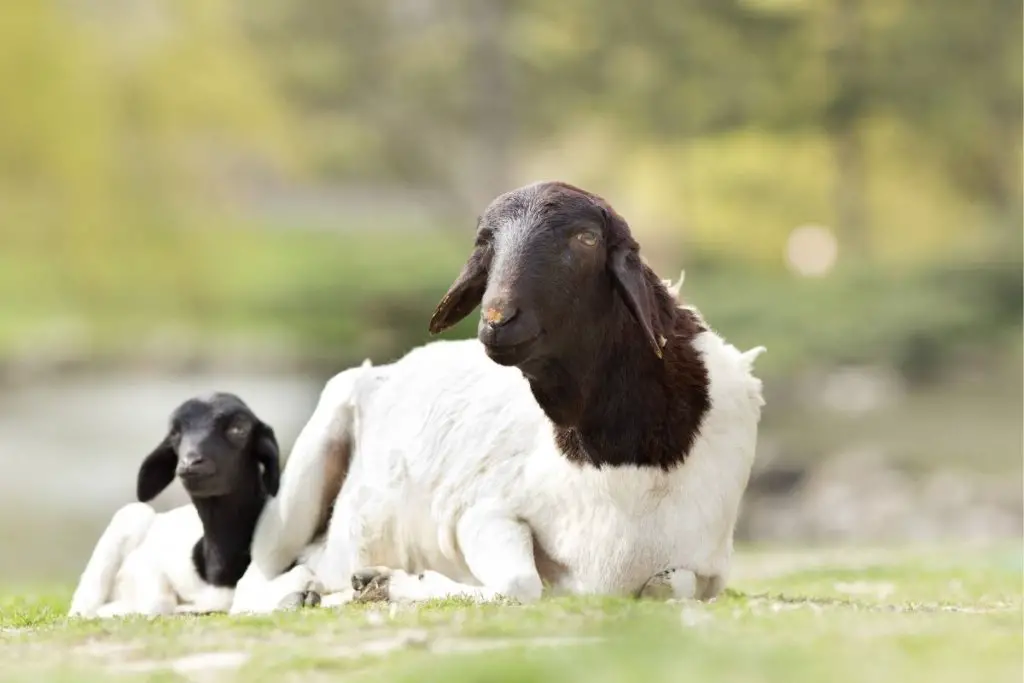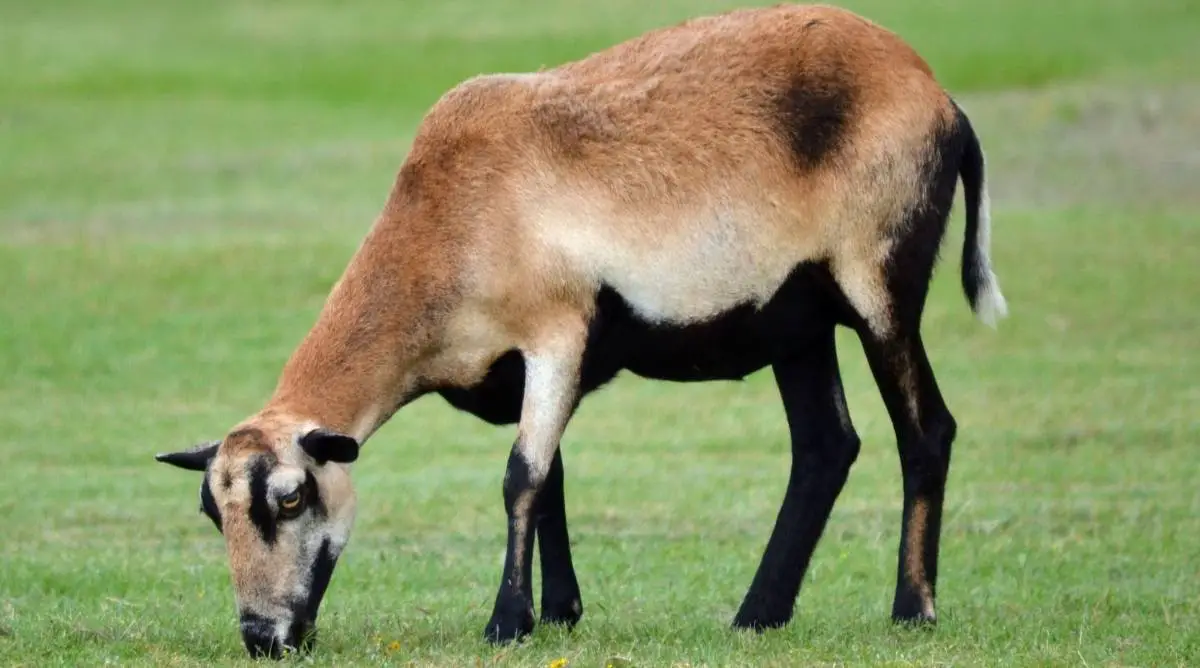Not all sheep are woolly. Hair sheep breeds are those that have hair rather than wool, and shed, rather than needing to be sheared. Notable hair breeds include the Katahdin, Barbados Blackbelly, Dorper, Royal White, and St Croix.
Table of Contents
What are Hair Sheep Breeds?
Hair sheep breeds are those that have hair rather than wool.
Hair sheep breeds originate from the Mouflon, a wild sheep breed.
Although humans domesticated sheep for their wool, meat, and milk, sheep are now primarily used for meat production. Hair sheep breeds are well-suited for meat production because they are low-maintenance.
Benefits of Hair Sheep Breeds Vs. Wool Breeds
Many farmers prefer hair sheep breeds over wool breeds. Here’s why:
- Hair sheep breeds have lower maintenance costs because they don’t require shearing.
- Hair sheep tend to be more heat tolerant than wooled breeds.
- They’re less susceptible to parasites and hoof-rot disease.
- Hair breeds are better grazers and foragers and tend to have lower nutrient requirements than wooled breeds.
- Most hair sheep breeds don’t require tail-docking.
- Hair sheep breeds are often more affordable since they’re smaller in stature than wooled breeds.
- Rearing hair sheep breeds is profitable since there’s a year-round demand for meat. Moreover, they produce mild flavor due to their lower fatty acid content.
10 Hair Sheep Breeds
Dorper
Native to South Africa, the Dorper is a sheep breed produced by crossing the Dorset Horn and Blackhead Persian.
It’s not a true hair sheep since it has wooly hair. However, like other hair sheep breeds, it doesn’t require shearing.
Dorper sheep have barrel-shaped bodies with loose hair and wool covering. They’re also polled and have a characteristic black head on a white body.
Mature Dorper rams weigh about 230lbs, while the ewes are approximately 190lbs.
Common uses for Dorper sheep include meat production and leather.
Other facts about Dorper sheep include:
- One of the fastest-growing hair sheep breeds.
- Excellent mothering skills and strong lambing abilities.
- Hardy and adaptable to various climates.
- Not selective grazers.
- Low-maintenance.
Barbados Blackbelly Sheep
Barbados Blackbelly sheep are a hair sheep breed renowned for their strong lambing abilities and resilience.
Barbados Blackbelly sheep are polled and look unlike nearly any other sheep breed, resembling deer from a distance. They have brown, tan, or yellow bodies with black underparts and a medium to thick hair coat that they shed in spring.
Their hair grows thicker in fall and winter, offering insulation from the harsh weather. Blackbelly rams have a thick mane of hair along their necks and brisket.
You might want to rear the Barbados Blackbelly sheep due to the following:
- Adaptable to cold and warm climates.
- Highly productive, producing 1-3 lambs per lambing season.
- Produce excellent-tasting meat with low-fat content.
- Resistant to parasites.
American Blackbelly Sheep

Unlike their cousins, the Barbados Blackbelly sheep, the American Blackbelly rams have eye-catching large, curved horns.
American Blackbelly sheep have a gorgeous tan or brown coat with a black face, underbelly, legs, and ears. These sheep are small-to-medium size.
Sheep producers go for this sheep breed due to the following:
- High resistance to parasites and diseases
- Adaptability to hot and cold climates
- Year-round fertility
- Low maintenance costs (no shearing, docking, vaccinations, or deworming)
- Non-selective feeding
Katahdin
Another renowned American sheep breed, Katahdin was created by Michael Piel, a geneticist in Maine, United States.
Piel crossed his prized Katahdin ram with Suffolk, Hampshire, Southdown, and Tunis ewes. Later, he crossed Katahdin and Wiltshire sheep to enhance their size and bone.
Katahdin sheep are docile and medium-sized. Ewes weigh 120-160lbs, while the rams are 180-250lbs. The majority are polled.
Katahdin exhibit a wide array of coat colors with varying fiber content. They don’t require shearing, as they naturally shed their coats.
Characteristics of Katahdin sheep include their:
- Hardiness and tolerance to parasites
- Efficient meat production ability
- Lean, well-muscled carcasses
- Fertility and exceptional mothering skills
- Large stature
- Adaptability
St Croix

The St Croix sheep is one of the earliest American breeds, originating in the Virgin Islands.
St Croix is a pure-white heritage breed, also referred to as the ‘Virgin Island White.’ However, some St Croix sheep are tan, brown, or black, while others are white with dark spots. Both sexes are polled.
St Croix sheep are renowned for their meat production and tolerance to parasites. They’re docile and calm, with good flocking instincts. The medium-sized sheep have average weights ranging between 150lbs (ewes) and 200lbs (rams).
They’re also fertile, and the ewes are ready for breeding a month post-lambing. Additionally, they produce 1-4 lambs per season.
St Croix are a popular hair sheep breed due to their:
- Low maintenance costs
- Adaptability to varied climates
- Excellent foraging capabilities
- Good milking ability
- Fly strike and hoof-rot resistance
- Ideal for crossbreeding
- Excellent mothering skills
- High lamb survival rates
Mouflon
The Mouflon is typically a wild sheep breed, although some domesticated Mouflon sheep exist.
This breed is believed to be one of the ancestors of the domestic sheep. Mouflon sheep roam the mountainous regions of Central Asia, Turkey, and the Mediterranean islands.
It is a small-sized horned sheep breed, with heights ranging from 27-35 inches. The rams’ average weight is 105lbs, while the ewes weigh approximately 70lbs. The rams have massive, curled horns that grow up to 33 inches long.
They have red-brown coats with a dark back stripe.
A few attributes of Mouflon sheep:
- They’re hardy and resilient.
- They’re low-maintenance sheep.
- They have exotic coloration.
Wiltshire Horn
This is an ancient British sheep breed native to the southwestern region of England.
Wiltshire Horn sheep have been exported to other parts of the globe, including Australia, Canada, and America.
Although grouped among hair sheep breeds, Wiltshire Horn isn’t a true hair sheep breed. It grows short wool and a thick, coarse hair coat that naturally sheds in summer.
Wiltshire Horn is a docile sheep breed. Both sexes are horned, with the rams having massive, curved horns.
The sheep are white with tiny black spots on their undercoats. They’re large-sized sheep, with the rams weighing up to 300lbs. Ewes weigh from 125-250lbs.
Wiltshire Horn sheep are a popular choice due to their:
- Superior quality, full-flavored meat
- Low maintenance costs due to no shearing
- Hardiness and good grazing abilities
- Easy lambing and excellent mothering instincts
- Distinctive coat type
Royal White
The Royal White s a pure white sheep breed developed in the US.
It’s one of the newest hair sheep breeds. Royal White sheep were created in the 1990s by Wiliam Hoag after crossbreeding the St Croix and White Dorper. They are renowned for their excellent meat.
Royal White sheep are medium-sized, weighing 150lbs (ewes) to 250lbs (rams). Both sexes are polled.
The sheep’s tails contain fat, enabling them to endure harsh freezing conditions. Experts don’t recommend docking them, as their tails also provide energy during lactation.
Royal White sheep are becoming an increasingly popular breed of hair sheep due to the following characteristics:
- Excellent mothering abilities
- Low nutrient and maintenance requirements
- Superior-quality leather
- Easy handling
- Tolerance to heat
Blackhead Persian

The Blackhead Persian is a hardy hair sheep breed native to Somalia.
Over time, it crossed to the Caribbean, becoming especially popular in Brazil.
The sheep has a characteristic black head on a white body, with a distinct line between the two colors.
Blackhead Persian sheep are well-known hair sheep bred for their meat. They’ve got a compact body, a fat rump (at the base of the tail), and short legs.
Blackhead Persian sheep are small to medium-sized, weighing 115lbs (ewes) to 150lbs (rams) upon maturity.
Blackhead Persian are renowned for their:
- Hardiness
- Adaptability to hot climates
- Milk production (ideal for cheese making)
Romanov Sheep
Romanov sheep are a unique hair sheep breed originating in Russia.
Romanov sheep are well-adapted to cold regions. The lambs are black at birth, but turn grey as they mature. They also experience early sexual maturity, beginning at three months.
Romanov sheep are prolific breeders, producing litters of up to six lambs. They’re commonly used to crossbred with other sheep breeds to improve their lambing abilities.
They’re medium-sized short-tail sheep, weighing between 100lbs (ewes) and 180lbs (rams)..
Well-regarded traits of Romanov sheep include:
- They’re hardy.
- They produce lean, mild-tasting meat.
- They can breed in and out of season.

